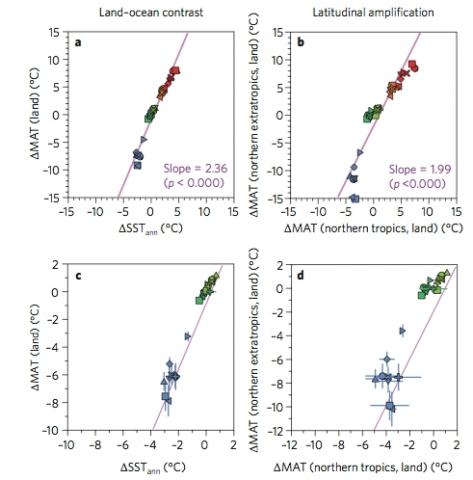[2015] Evaluating simulation of past climate for improvement of prevision of future climate
Structural differences among models account for much of the uncertainty in projected climate changes, at least until the mid-twenty-first century. Recent observations encompass too limited a range of climate variability to provide a robust test of the ability to simulate climate changes. Past climate changes provide a unique opportunity for out-of-sample evaluation of model performance. Palaeo-evaluation has shown that the large-scale changes seen in twenty-first-century projections, including enhanced land–sea temperature contrast, latitudinal amplification, changes in temperature seasonality and scaling of precipitation with temperature, are likely to be realistic. Although models generally simulate changes in large-scale circulation sufficiently well to shift regional climates in the right direction, they often do not predict the correct magnitude of these changes. Differences in performance are only weakly related to modern-day biases or climate sensitivity, and more sophisticated models are not better at simulating climate changes. Within this study, different models are evaluated through paleoclimatic simulations for mid Holocene and last glacial maximum, i.e. periods characterized by climates much different from the present one. The study concludes that despite regional differences, large scale behaviour of the models is consistent between past and future climates (cf figure) and that the past climates are consistent with data.
Reference: Harrison, S.P., Bartlein, P.J., Izumi, K., Li, G., Annan, J., Hargreaves, J., Braconnot, P., and Kageyama, M. (2015). Evaluation of CMIP5 palaeo-simulations to improve climate projections. Nat. Clim. Chang. 5, 735–743.
Figure: Evolution of the shifts in simulated mean annueal temperature (MAT) between the last glacial maximum / Mid Holocene and the present day as a function of the sea surface temoerature (SST) and northern tropics MAT as obtained in the model –top) and in the data (bottom).

